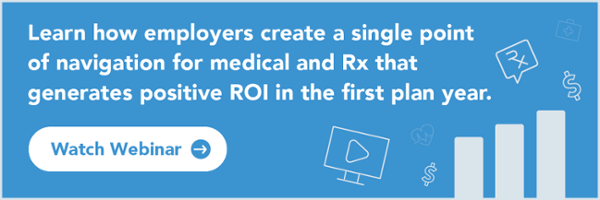 Healthcare price and quality transparency continues to make headlines following an executive order and news related to newly proposed legislation, state governments turning to alternative cost-saving solutions, and staggering statistics related to families struggling to pay medical bills. Municipalities, self-insured employers, Fortune 500 companies and sharing ministries are just a few of the organizations stepping up their quest for innovative solutions to curb rising healthcare benefits expenses.
Healthcare price and quality transparency continues to make headlines following an executive order and news related to newly proposed legislation, state governments turning to alternative cost-saving solutions, and staggering statistics related to families struggling to pay medical bills. Municipalities, self-insured employers, Fortune 500 companies and sharing ministries are just a few of the organizations stepping up their quest for innovative solutions to curb rising healthcare benefits expenses.
To parse out some of the causes of the cost incline, Healthcare Bluebook (Bluebook) recently partnered with Employee Benefit News (EBN) and Bluebook client, Activision Blizzard, to sponsor Why a Top 100 ‘Best Place to Work’ is Prioritizing Transparency, a webinar focused on the importance of healthcare transparency to drive cost savings.
With 6,000 employees throughout the world, Activision Blizzard is the world's most successful standalone interactive entertainment company, creator of global entertainment franchises like Warcraft and Call of Duty, and a Fortune "100 Best Companies to Work For" for the fourth consecutive year. The self-insured company began offering Bluebook to its employees in 2014.
EBN contributor, Bruce Shutan, moderated the presentation that featured Bluebook Co-founder and Senior Vice President of Analytics and Innovation, Bill Kampine, and Milt Ezzard, Vice President of Global Benefits for Activision Blizzard who discussed the need for price and quality transparency to help employees become more informed and cost-efficient healthcare consumers.
Ezzard began by describing Activision Blizzard’s work hard - play hard culture, not uncommon in the tech industry, he explained, where high energy permeates a culture of hard-driven innovation.
“We have studios that work around the clock before a game launch. They work so hard they’re almost into burn-out mode by the time they’re finished … very informal for a corporate culture and a hard-working fun group.”
When he joined the organization in 2013, Ezzard said he was surprised by the conventional benefits provided by such a non-traditional company. “We offered a free healthcare plan for our employees … a fully insured HMO, and it never got used … assets we were spending on healthcare that weren’t being utilized.” That awareness had a huge impact on their benefits strategy, explained Ezzard.
In addition to an HSA and a wellness program, the company aims to provide benefits that bring real value to employees and have an impact on how they perform at work. Results of their efforts are monitored and mapped to the company’s self-insured claims data to provide a snapshot of the overall cost impact, yet healthcare costs continued to rise. (Currently, U.S. employers shoulder roughly one-third of the nation’s healthcare spend.)
Bluebook’s Kampine explained that the major problem faced by employers and consumers today is the high cost of care and the extreme variation in price. He cited a study conducted by the Health Care Cost Institute (HCCI) that compared four years of commercial claims data and revealed that per capita consumption is either flat or declining, yet employers are still experiencing annual increases in their medical costs.
“If patients aren’t consuming more care, but cost is increasing, then price is the culprit,” said Kampine. “We’re paying more for the same services, and worse yet, we’re frequently paying more for poor quality care. This is a huge problem for companies, the sellers of consumer goods and services,” he explained. “As healthcare costs continue to rise as a proportion of the total economy, consumers have fewer dollars to spend on phones, cars and other services, which means that price and quality information is more important than ever.”
After researching Bluebook, Ezzard said the benefits of the transparency solution were obvious. “Implementing a cost transparency tool, out of the gate the ROI is there. There’s no question that more will be saved by cutting out waste than it costs to implement a product. It makes people happier because they’re spending less out of pocket, and the employer is better off financially because they’re not spending much on waste. It’s truly a win-win.”
Listen to the entire webinar and learn more about how Healthcare Bluebook can help your company lower its healthcare spend.
Next up on the Bluebook blog, read about Shannon who saved $1,500 on an MRI after using Bluebook to shop for care.
Real people. Real savings. Contact Healthcare Bluebook today.
